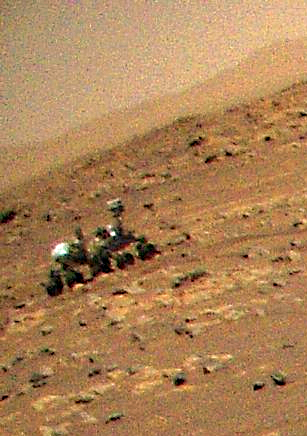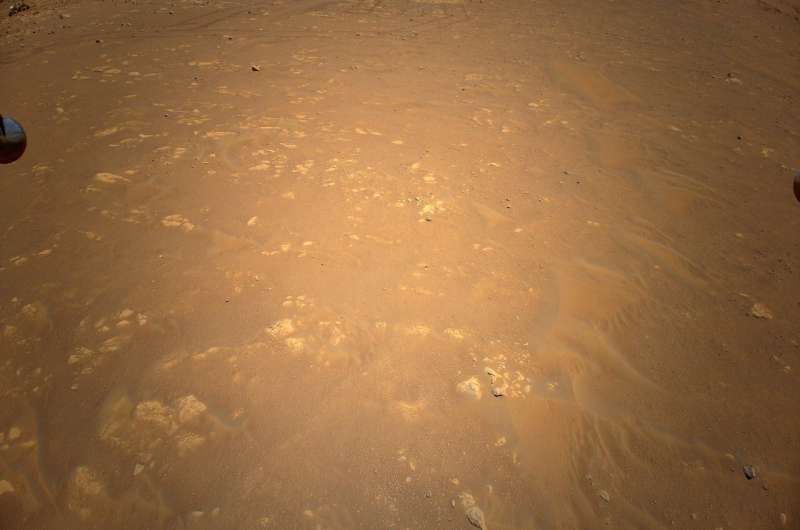EDT (7:12 a.m. PDT, 12:30 p.m. local Mars time), with the first data expected back at NASA's Jet Propulsion Laboratory in Southern California at 1:21 p.m. EDT (10:21 a.m. PDT).
"From millions of miles away, Ingenuity checked all the technical boxes we had at NASA about the possibility of powered, controlled flight at the red planet," said Lori Glaze, director of NASA's Planetary Science Division. "Future Mars exploration missions can now confidently consider the added capability an aerial exploration may bring to a science mission."
The Ingenuity team had three objectives to accomplish to declare the technology demo a complete success: They completed the first objective about six years ago when the team demonstrated in the 25-foot-diameter space simulator chamber of JPL that powered, controlled flight in the thin atmosphere of Mars was more than a theoretical exercise. The second objective—to fly on Mars—was met when Ingenuity flew for the first time on April 19. The team surpassed the last major objective with the third flight, when Ingenuity rose 16 feet (5 meters), flying downrange 164 feet (50 meters) and back at a top speed of 6.6 feet per second (2 meters per second), augmenting the rich collection of knowledge the team has gained during its test flight campaign.
"When Ingenuity's landing legs touched down after that third flight, we knew we had accumulated more than enough data to help engineers design future generations of Mars helicopters," said J. "Bob" Balaram, Ingenuity chief engineer at JPL. "Now we plan to extend our range, speed, and duration to gain further performance insight."
Flight Four sets out to demonstrate the potential value of that aerial perspective. The flight test will begin with Ingenuity climbing to an altitude of 16 feet (5 meters) and then heading south, flying over rocks, sand ripples, and small impact craters for 276 feet (84 meters). As it flies, the rotorcraft will use its downward-looking navigation camera to collect images of the surface every 4 feet (1.2 meters) from that point until it travels a total of 436 feet (133 meters) downrange. Then, Ingenuity will go into a hover and take images with its color camera before heading back to Wright Brothers Field.

NASA’s Perseverance Mars rover is visible in the upper left corner of this image the agency’s Ingenuity Mars Helicopter took during its third flight, on April 25, 2021. The helicopter was flying at an altitude of 16 feet (5 meters) and roughly 279 feet (85 meters) from the rover at the time. Credit: NASA/JPL-Caltech 
NASA’s Perseverance Mars rover is visible in the upper left corner of this image the agency’s Ingenuity Mars Helicopter took during its third flight, on April 25, 2021. Credit: NASA/JPL-Caltech
"To achieve the distance necessary for this scouting flight, we're going to break our own Mars records set during flight three," said Johnny Lam, backup pilot for the Ingenuity Mars Helicopter at JPL. "We're upping the time airborne from 80 seconds to 117, increasing our max airspeed from 2 meters per second to 3.5 (4.5 mph to 8), and more than doubling our total range."
After receiving the data from the fourth flight, the Ingenuity team will consider its plan for the fifth flight.
"We have been kicking around several options regarding what a flight five could look like," said Balaram. "But ask me about what they entail after a successful flight four. The team remains committed to building our flight experience one step at a time."
For more about Perseverance, go to: nasa.gov/perseverance and mars.nasa.gov/mars2020/



